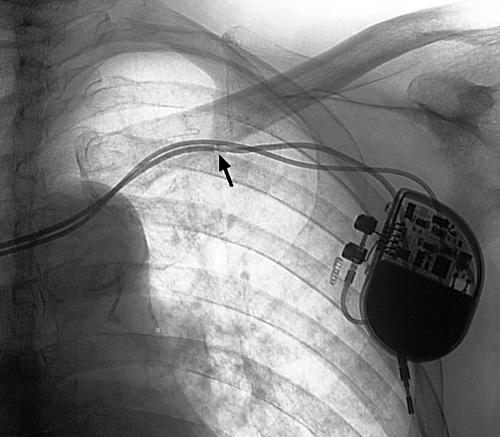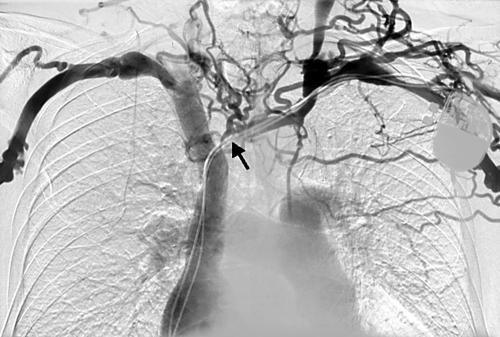A patient with dilated cardiomyopathy and heart failure was referred for implantation of a biventricular pacemaker. He had received a VVI pacemaker seven years ago for atrial fibrillation with bradycardia. A new ventricular lead was implanted after two years due to isolation failure of the first lead (below left). Both leads were implanted by subclavian puncture. Implantation of the coronary sinus lead was attempted using a left sided approach, but had to be aborted due to occlusion of the innominate vein, with venous drainage via a network of collaterals (below right). The procedure was successfully undertaken using right sided axillary vein puncture.
This case illustrates how insulation failure or lead fracture may result from subclavian crush. Friction with the clavicle may be avoided by introducing leads more distally by cephalic vein cutdown or axillary vein puncture. The second complication was venous occlusion, which most often involves the subclavian or innominate veins, and is most common in patients with multiple leads.




